Slides with notes of a brief talk given at the first international in-person conference for shipping interests organised by CORE POWER at the Science Museum, 6 Oct 2022.
1. Just enough time to answer three questions of importance to the future of shipping.
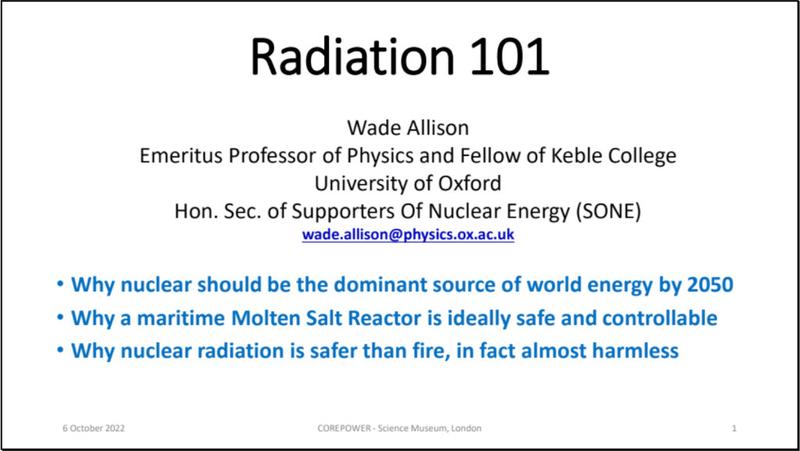
2. What sources of energy are available in principle that are powerful
enough, reliable enough and have a tolerable environmental impact?
Surprisingly there are only three candidates. Of these, only nuclear
satisfies all requirements, except that it is thought to be unsafe.
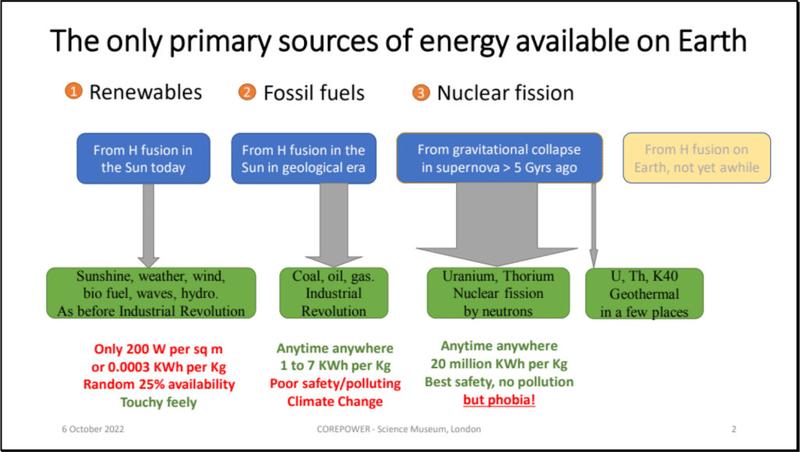
3. In the context of an atmospheric pressure molten-salt-cooled Small
Modular nuclear Reactor powering a large ship, is this safety
concern a severe constraint?
No, there are four levels of protection shown as boxes: 1) passive
safety, as the temperature rises the reactor switches off; 2) the
sea provides natural cooling capacity; 3) the low pressure prevents
ejection of radioactivity; 4) evolution over billions of years has
ensured that low and moderate exposure to nuclear radiation is
essentially harmless.
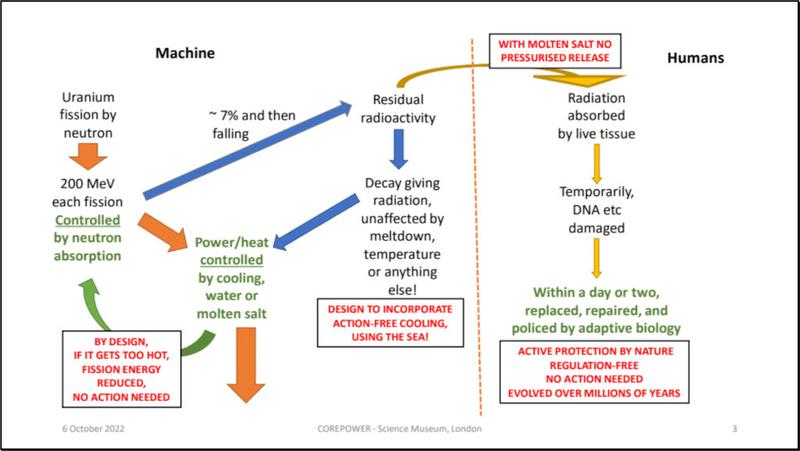
4. The natural protection afforded by evolution may be surprising but it is well established and is exploited in the cure of cancer. But in 1955 because of the nuclear arms race the dangers of radiation were exaggerated 1000 times.
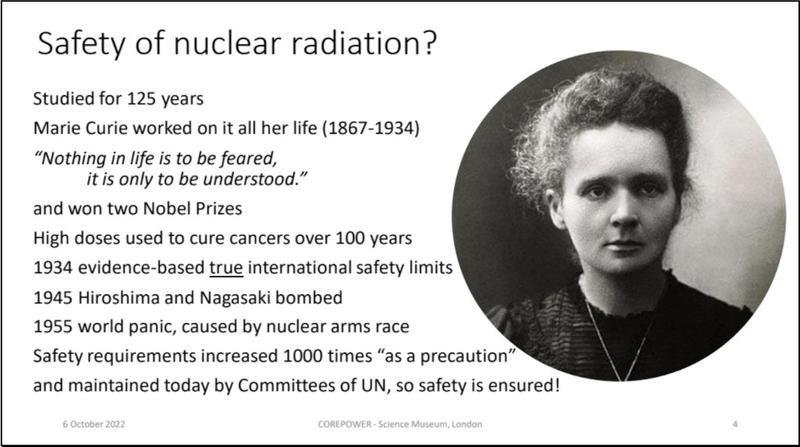
5. The exaggerated danger of a monthly radiation dose, as defined by regulations, is compared graphically with what is received beneficially for personal health. The yellow area is accepted as worth the risk in radiotherapy treatment. The green area shows no record of harm to life. The white dot, also shown expanded, is the monthly radiation exposure widely accepted as the limit for public exposure, according to regulations.
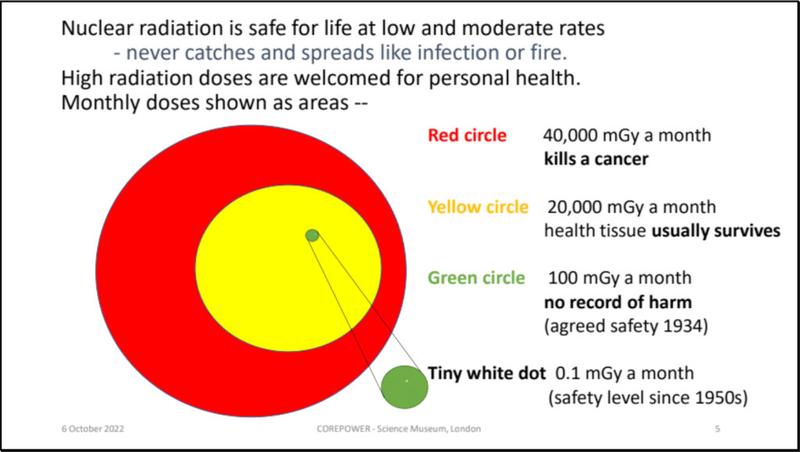
Evidently the world needs to reconsider the nuclear radiation regulation recommendations of the United Nations. Anyway, the dangers from the application of nuclear energy to shipping are very much smaller than widely supposed.
